The Future of AI: How Daniel Miessler Changed My Mind (and What Comes Next)
A tribute to a visionary and a deep dive into the predictable, yet challenging, path toward an AI-augmented future.
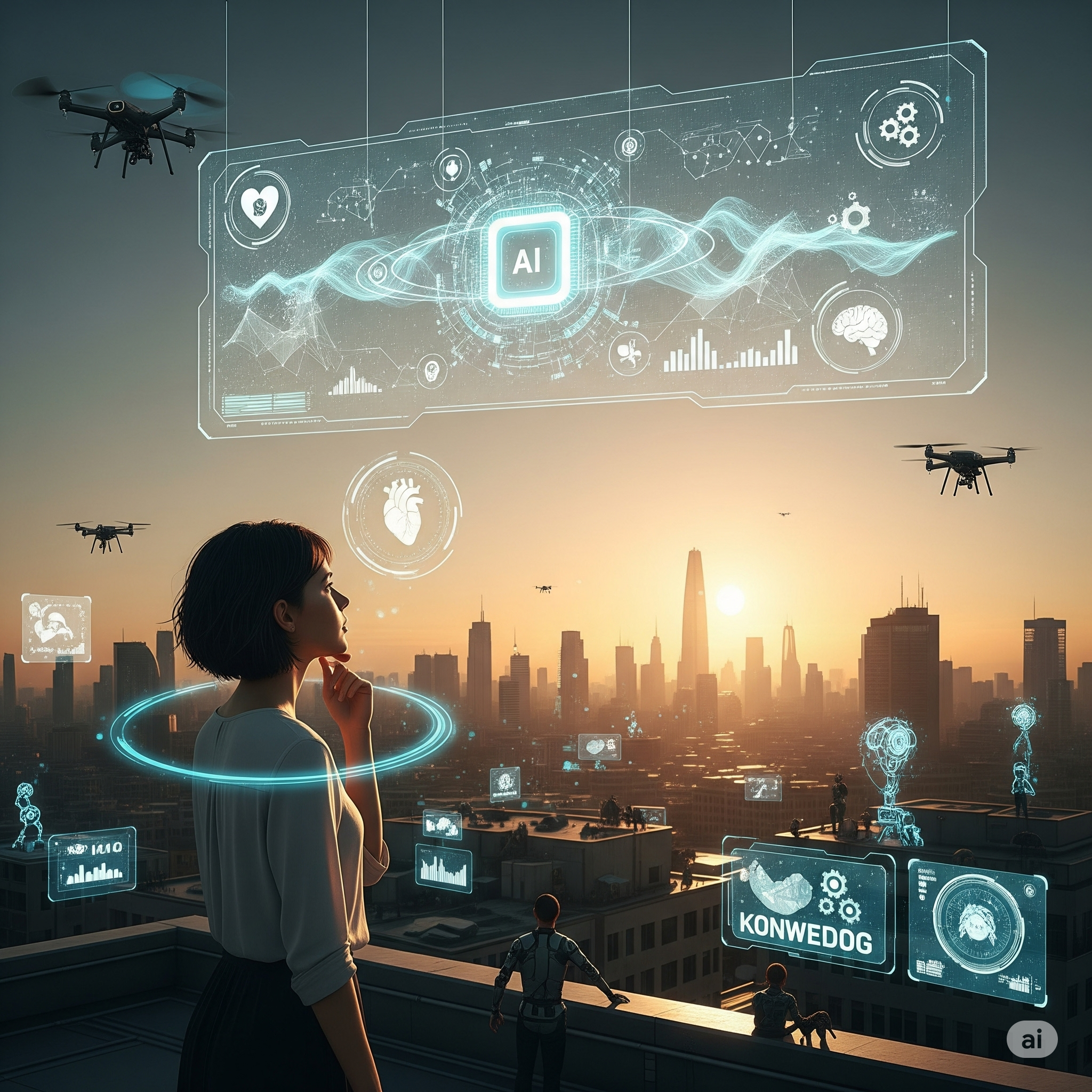
As someone who spends a lot of time thinking about hacking and new AI tech, I've always looked for big ideas that go beyond just the latest gadgets. I wanted to understand where all this amazing technology is really taking us. That's when I found Daniel Miessler's work. For me, he's like a walking encyclopedia for our industry, someone I truly look up to. His way of explaining complicated tech stuff in a simple, almost predictable way is just brilliant. Daniel Miessler has made a huge impact in the cybersecurity and bug hunting industry, and this is just one small way we can try to repay him for his incredible contributions. We will never forget him.
The "Why" of AI: Daniel Miessler's Game-Changing Perspective
Daniel's blog post, "AI's Predictable Path," and his deeper dive, "The Real Internet of Things", didn't just teach me new things; they completely changed how I see the future. Before reading his work, my focus, like many in our field, was mostly on the "how" like, how do these AI programs work? What kind of computer power do they need? But Daniel brilliantly flipped that around. He said, "Forget the 'how' for a moment. Let's talk about the 'why'." He believes that even though the way technology grows might seem random, where it's going is actually very clear. Why? Because it's always trying to meet our basic human needs: to feel safe, to do well in life, and to connect with others. This simple but powerful idea suddenly made all the crazy AI news make perfect sense.
His ideas about "Universal Daemonization" really blew my mind. Imagine every object, your car, your house, even you having a special digital "tag" or "daemon" that lets it share information and talk to other things. It's like how in anime or movies, characters sometimes have an "aura" that shows how strong or what kind of person they are. The more intense their aura, the more powerful they seem! Daniel's "human daemons" or "auras" would be like that, but for your digital self, sharing what you want, when you want. And then, your "Digital Assistant" (DA) would be your personal AI helper, talking to all these digital "tags" for you. It would be like having a super-smart friend who knows you inside out, always working to make your life better, finding things you like, and even protecting you. The thought of Augmented Reality (AR) glasses letting us see these digital "auras" and information overlaid on the real world? That's not just cool, it feels like the next big step for humanity. I'm so excited for that to happen in real life!
This new way of looking at things changed everything for me. It made me see beyond just the cool new tech to the bigger picture of how society will change. It’s not just about building smarter machines; it’s about building a world that naturally helps humans live better, more connected lives.
Daniel Miessler's Projects: Building the AI-Augmented Human
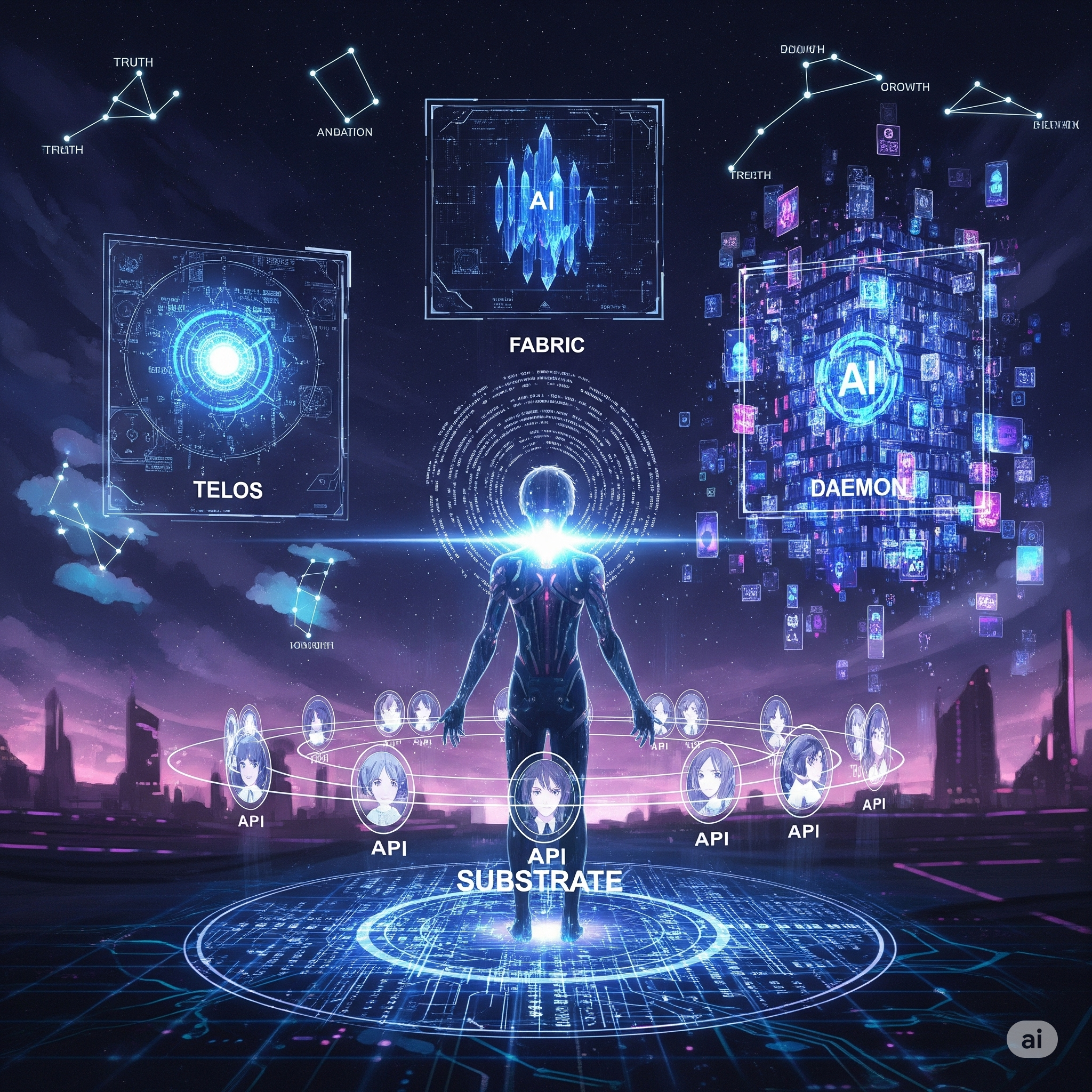
Daniel isn't just talking about ideas; he's building them. His projects like Telos, Fabric, Substrate, and Daemon are all about helping us get ready for this future. They're designed to help you become an "AI-augmented" human, giving you superpowers to navigate this new world.
- Telos: This project is all about giving your personal AI (your DA) the ability to truly understand you. It's like building a deep, personal profile of your life's mission, goals, and strategies. This means your DA can know everything about you, not in a creepy way, but so it can help you live your best life, making decisions that truly align with your purpose.
- Fabric: Think of Fabric as a massive, crowd-sourced library of AI "recipes" or "patterns." These are human-written instructions that tell AI exactly what to do to solve everyday problems. For example, if you need to summarize a long document, analyze an argument, or even get ideas for a creative project, Fabric provides the perfect AI prompt. It's awesome because it helps you use AI to become your best self, whether for learning, self-improvement, or just getting daily tasks done.
- Substrate: This is a big-picture idea, almost like a new operating system for humanity. It's a shared library of important human concepts like arguments, beliefs, problems, and solutions. It's designed to help us organize and optimize how we think and interact as a civilization. It's the philosophical foundation for a world where humans are "upgraded."
- Daemon: This is the actual system for publishing your digital "aura" to the world. It lets you create a digital representation of yourself or your business as an API. This means others can understand what you're about and why they might want to work with you, all through a standardized digital interface. It's the practical way to make "Universal Daemonization" a reality.
These projects are awesome because they're designed to work together as a complete system for human enhancement and flourishing in the age of AI. They help you find your life's mission, augment your abilities with AI, and even help you change behaviors to achieve your goals. It's all about empowering you to thrive in this new landscape.
The Unseen Side of AI's Progress: Real-World Obstacles
While Daniel's vision shows us a super exciting picture, my own research and a little bit of real-world experience have made me think about some "bumps in the road." These aren't reasons why his vision won't happen, but rather things we need to figure out to make sure it happens smoothly and fairly for everyone.
Your Digital "Aura": The Privacy Puzzle
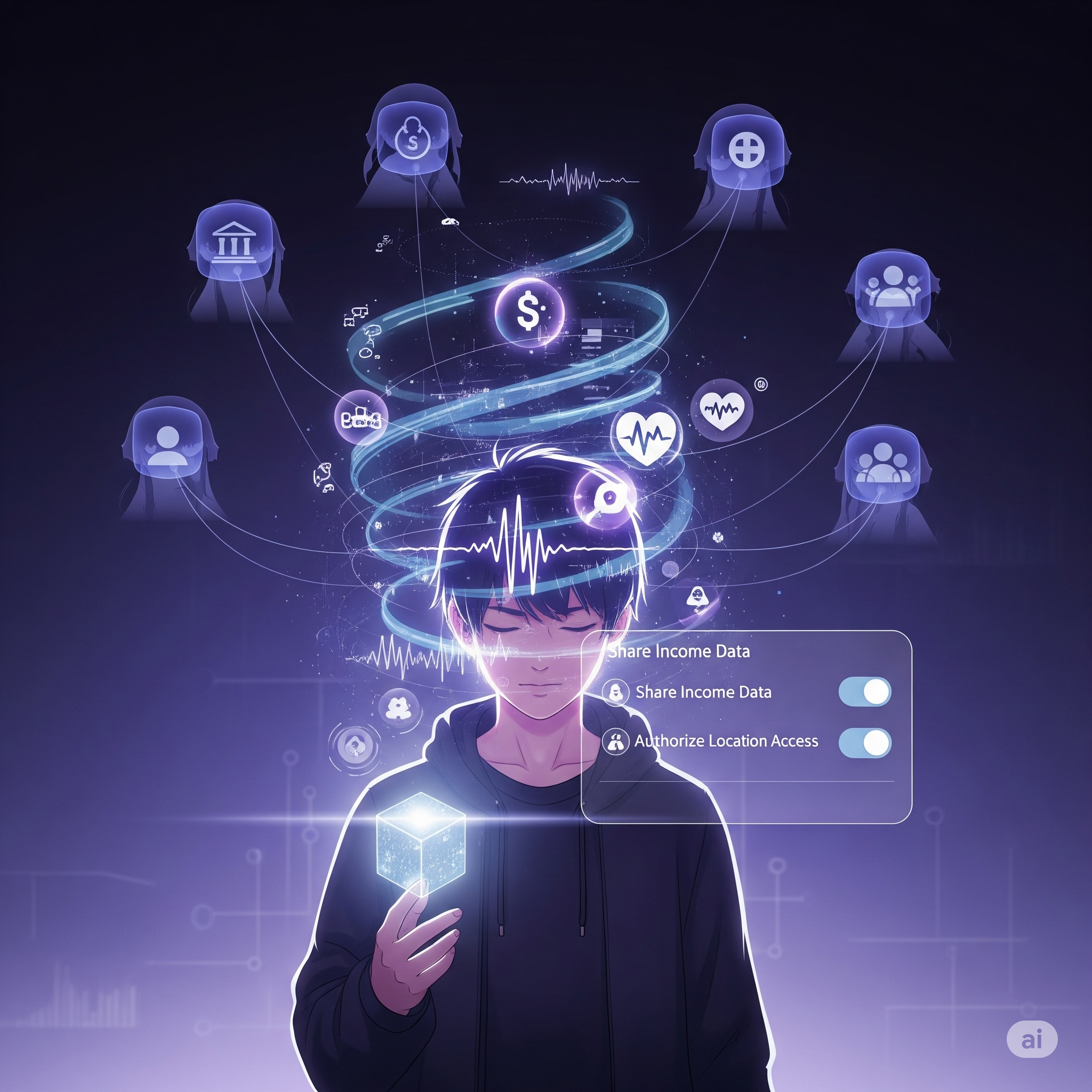
Daniel talks about his "Telos" project, where your personal AI (your DA) gets to know everything about you. You might think, "If it's my DA and my data, why worry about privacy laws?"
- The Challenge: Here's the thing: even if your DA is totally yours and you give it permission to know everything about you, the moment it starts talking to other "daemons" like a business's digital tag, a public service's tag, or even another person's DA, it steps into a world with privacy rules. Laws are there to protect how all organizations handle personal information, no matter where it comes from. So, while you control your DA, its conversations with the outside world mean privacy isn't just about your personal bubble. For example, if your DA helps you apply for a loan, it might share some of your financial data with the bank's daemon, and that bank has to follow strict privacy laws.
- How We Might Solve It (and we're already trying!): This challenge is actually pushing us towards smarter solutions. Imagine having a digital wallet for your personal information, where you decide exactly what gets shared, and when. This is called Self-Sovereign Identity (SSI). It's a big deal because it puts you in charge. So, your "human daemon" would work with your permission, not just openly broadcast everything. This puts you in charge of your digital self, allowing deep personalization while still respecting your privacy, rather than making privacy irrelevant.
Smart Glasses: Are We Ready for the AR Revolution?
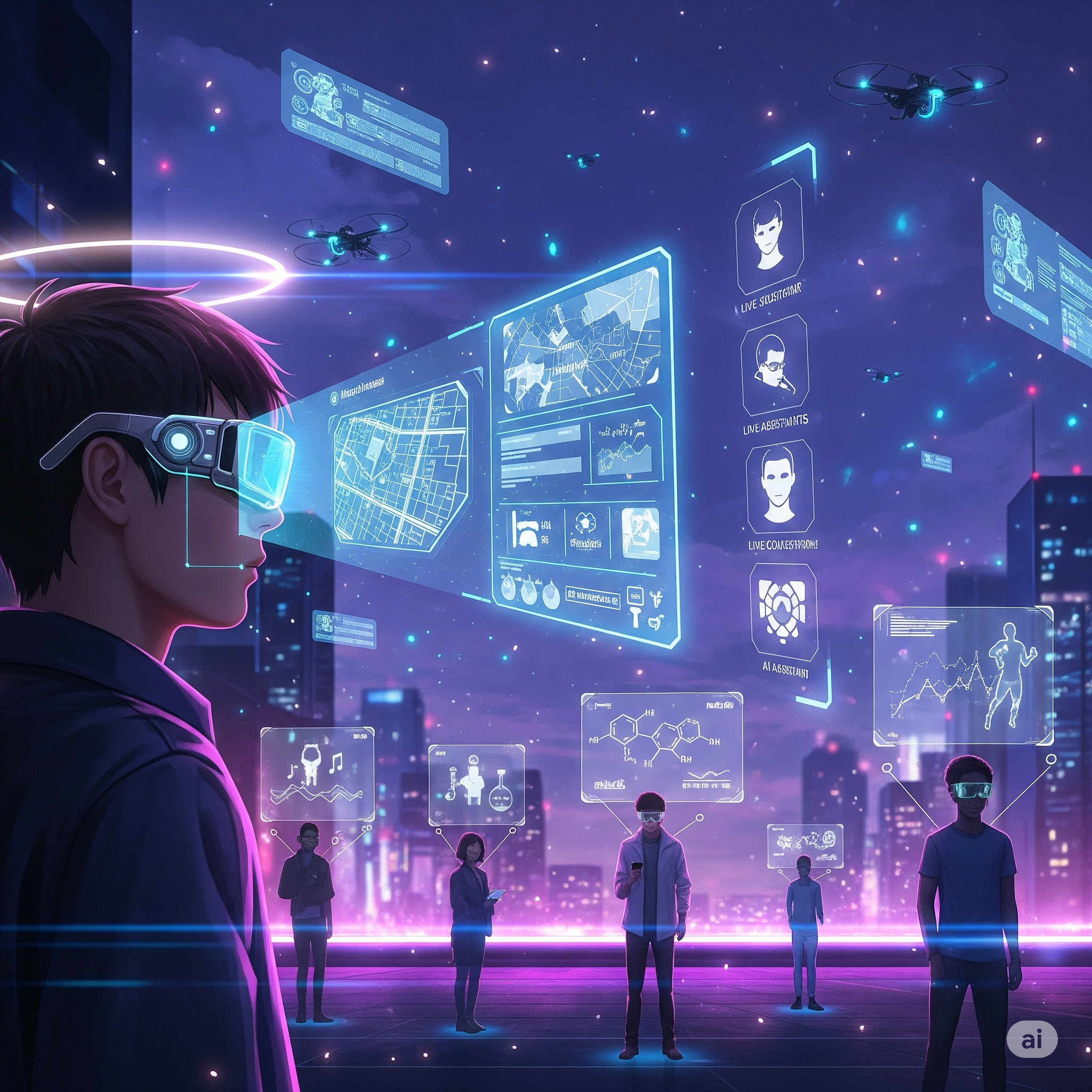
Daniel's vision of AR glasses showing us digital information overlaid on the real world is exciting. You're right to point out that this is a prediction for the next decade or more, and the tiny computer chips (GPUs, TPUs, microchips) inside these devices are getting incredibly powerful, incredibly fast!
- The Challenge: While the processing power is indeed soaring, other physical hurdles remain. For example, battery life is still a big concern for AR glasses that are packed with features. Also, making them affordable and proving their everyday value to everyone, not just tech enthusiasts, is a continuous race.
- How We Might Solve It: The good news is that these tiny, powerful chips are making AR glasses smaller, lighter, and more capable than ever. Companies are constantly working on better batteries and more efficient designs to extend their use. The big goal is to make them so comfy, affordable, and useful that they become as common as smartphones, seamlessly fitting into our daily lives. Since we're talking about the next decade, the advancements will be truly amazing, likely giving us even more than we expect! For example, new "multimodal AI" models like Gemini 2.5 Pro and Claude Opus can now understand and combine information from text, images, audio, and even video. This means AR glasses can process what you see, hear, and say all at once, leading to much smarter and more helpful digital overlays. Imagine an AR app that not only shows you directions but also understands your voice commands and adjusts based on what it "sees" around you. This kind of "context awareness" is exactly what Daniel envisioned for AR.
The Human Heart of AI: Why Connection Still Matters
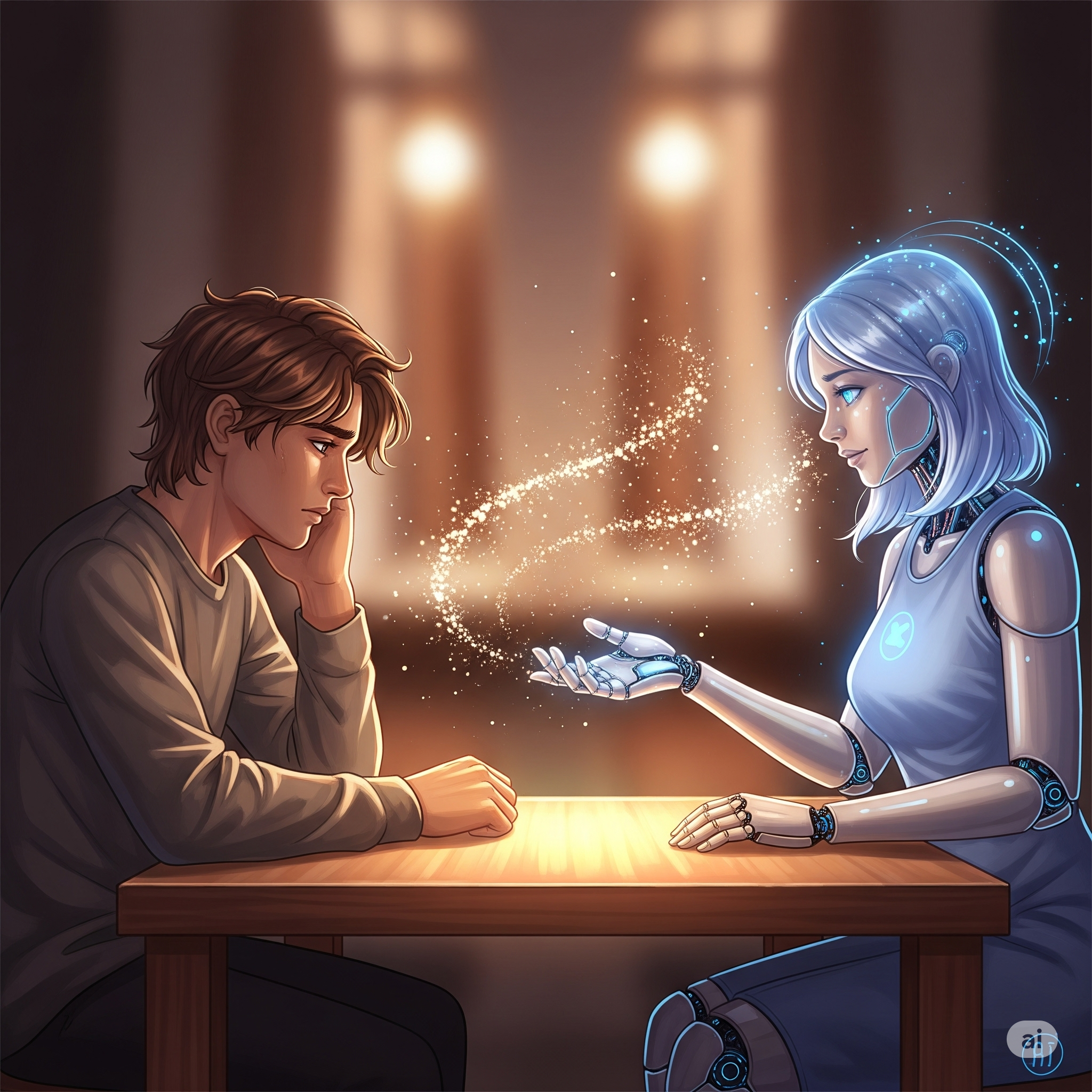
Even with super-smart AI, people still want to talk to real humans for important or sensitive things. You've noticed that AI can already pick up on emotions and use tones that fit the user's feeling.
- The Challenge: It's true that AI can now understand what you're saying, how you're saying it, and even respond in a way that sounds empathetic. It can even "read" facial expressions and body language. But there's a big difference between acting like it understands and truly feeling emotions like we do. For really deep, personal stuff, like getting advice on tough life problems or dealing with big emotions, humans still offer a unique sense of safety, trust, and nuanced understanding that AI hasn't quite matched.
- How We Might Solve It: This isn't necessarily a "problem" that needs to be "solved" by AI becoming fully human-like. Instead, it points to a future where AI helps human connection, rather than replacing it. AI can handle many "transactional" emotional interactions, freeing up humans to focus on the truly "transformational" ones. For example, an AI could quickly answer common questions about a medical condition, but a human doctor would still be there for the difficult conversations about treatment options or emotional support. The most successful AI will likely work with humans, providing efficiency while ensuring that genuine human empathy and good judgment are always available for those profound, unscripted moments. Your DA, being your AI, will be a key part of this. Models like Gemini 2.5 Pro and Claude Opus are already showing incredible "reasoning" abilities, meaning they can think through complex problems and even suggest next steps. They can analyze huge amounts of information and even help with complex coding tasks. This means your DA will be like a super-smart advisor, helping you make complex decisions by giving you all the best information and insights, making you the ultimate "human in the loop" for your life.
Shaping AI's Tomorrow: A Proactive Approach
Daniel Miessler's work gave me the "what" and the "why" of AI's future. But my own research and experience have deepened my understanding of the "how" specifically, how we must actively tackle these challenges to make sure his predictable path leads to a truly good future for everyone.
- "Human 3.0" is Our Guiding Star: Daniel's idea of "Human 3.0" people who are enhanced by AI and doing great things in a new world isn't just a nice thought; it's a crucial goal. It means that as AI gets smarter, humans must also adapt and grow alongside it. This involves focusing on education that teaches us how to think critically and solve problems, so we can work with AI effectively, not just rely on it.
- Ethical AI is Just Smart: Building trust and sticking to good ethical rules isn't just about following laws; it's a smart way to make sure AI is successful in the long run. Companies that design AI systems to be fair, open, and respectful of privacy from the very beginning will earn more trust and do better. This includes making sure AI doesn't have hidden biases and that we understand how it makes decisions.
- Embracing Hybrid Solutions: The most successful uses of AI will likely be hybrid, smoothly combining AI's speed with the unique skills of humans. This means designing systems where AI handles routine tasks, but a human is always there for complex decisions, ensuring that human judgment stays in charge. As we discussed, your personal DA will be a prime example of this, working with you, not for you, on the most important choices in your life.
- Smart Rules and Teamwork: Technology moves fast, and laws often struggle to keep up. To avoid slowing down progress while still protecting people, we need flexible rules and ways for governments, businesses, and everyday people to work together. This means creating "sandboxes" where new AI can be tested safely, helping us learn how to make good rules before problems get out of hand.
Daniel Miessler has given us an amazing map, pointing towards a future shaped by our deepest desires. My journey through his work and my own research has confirmed that direction, but it has also shown me the complex, often challenging, landscape we must cross. The real test of our cleverness won't just be in building the next generation of AI, but in making sure that this predictable path leads to a future that is not only smart and efficient, but also truly human, ethical, and trustworthy.
Want to dive deeper into Daniel Miessler's groundbreaking ideas? I highly recommend reading his original posts:
They are truly eye-opening reads!
